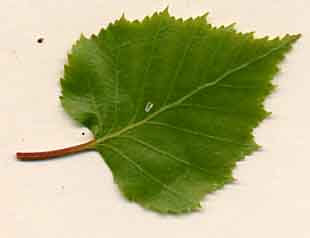
Tree Top Guide - The Great Oak
Botanical name : Quercus robur
Common names : Oak, Great Oak,
Physical appearance : A large decidious tree, growing up to 20+ metres in height. Naturally growing oaks can be very long lived, with some species reaching 1000 years or more. Cultivated specimens can live even longer. In the UK, oaks have the largest cirumference of any tree and can be up 15 metres around. The oak's leaves are lobed, have very short stalks and tend to stay on the tree well into autumn. It produces nuts, known as acorns every two years.

Where to find : Common throughout the United Kingdom and Europe. Oak trees like fertile, well watered soils.
Uses : Oak wood is known for its tough physical properties and is commonly used in building and furniture construction.
With much processing, acorns can be made into edible fare. They can not be eaten straight from the tree due to the high levels of tannins. Removing these tannins can be fairly laborious. This process involves peeling/cracking the acorns and then boiling them in regularly changed water, until tender, This process may take an hour or several days, depending on tannin levels, temperatures, and variety of oak.
Recipe: To prepare the acorns; first wash the acorns in plenty of cold water. Discard any acorns that float or have had their caps removed, as these will most likely be infested or past their best. Now crack open and peel the acorns, removing the meat from the shell, discarding the shell. Then, place them into a sauce pan and bring them to the boil. Once boiling, wait until the water turns a dark tea colour. At this point, transfer all the acorns into a fresh pot of boiling water and continue to boil. Again, once the water becomes a dark tea colour, remove the acorns and place them into fresh, boiling water. Repeat this process until the water remains clear. A return of clear water is a good indicator that the tannins have been removed. During this process, be sure that the acorns do not have time to cool as this will bind in the poisonous tannins.
Once clear of tannins, they are ready to eat and can be consumed in a variety of ways.
A common way to prepare acorns is to first turn them into flour, then bread. Alternatively, they can be roasted (as per chestnuts) with a little salt added to taste,
NB - Many plants can look and smell like another, please be sure you know what you are picking and eating!
Images courtesy of : Zkrszakow, Snowmanradio and Nick Shaforostoff via Wikipedia Creative Commons Attribution
The Bushgear Team


